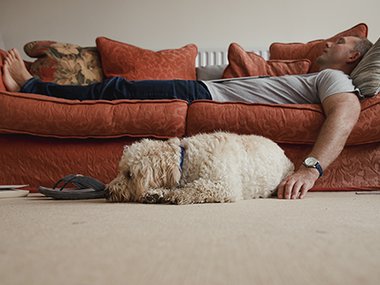Question Your World: How Often Do We Sit?
Okay, I’ve got some news for you. You may want to sit down for this one … or maybe not. A team of researchers just published their latest study on how Americans still sit too much! So, how often do we sit?
This research on how much time Americans spend being sedentary is the first of its kind, in that scientists looked at all ages and ethnicities across the entire nation. For this research, they studied 51,000 people from 2001 to 2016. Individuals were placed into four age groups: children between ages of 5 and 11, adolescents between the ages of 12 and 19, adults from 20 to 64, and older adults 64 and up.
So, what were the results? Well, there’s a whole lot of sitting going on! Across all age groups, the majority of Americans spend at least 2 hours per day sitting, watching TV or having casual internet time. Speaking of casual internet time, a quarter of Americans are now using computers outside work and school for at least three hours or more per day! Furthermore, adolescents and adults both reported their sitting time had increased by an hour from 2007 to 2016, showing more proof of this growing sitting-trend.
All this sitting comes with some concern, though, as scientists have attributed inactivity to an increased risk of obesity, diabetes, and heart disease among other health issues. While there have been many studies in the past about sedentary lifestyles and the health impacts involved, this is the first time a study has been done to capture the sitting-data at a national level. This gives us a broad range picture on how much we sit and maybe we will take some steps to prevent so much down-time.
This is not to say that resting is bad. Quite the opposite actually. Scientists have done many studies on how important rest and downtime can be for the body, brain, and overall quality of life. Too much rest though treads into the territory of poor health as well. Like most things mom told us growing up, balance is very important. Activity and rest are both vital to a healthy human body. Monitoring these things gives scientists information to pass along to the public, in hopes of helping them raise the bar on their own quality of life.
This information is not only good for the general public, but also for city planners. Designing neighborhoods to include areas where parents and children can safely get their move-on will help promote more active, thus healthier, citizens. This research on sitting habits further shows that concern over public health is a standing issue.


